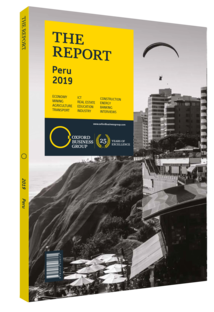Jorge Olazábal, General Manager, Cálidda: Interview

Interview: Jorge Olazábal
How could the gasification gap between the central and southern regions be narrowed?
JORGE OLAZÁBAL: It is essential for us to make the best use of the resources we possess, which is why the Southern Peru Gas Pipeline project – as well as other large infrastructure projects – is so important: it will ensure the optimal use of Peru’s natural gas reserves. Our current natural gas proven reserves amount to approximately 14.1trn standard cu feet, which at current consumption ratios will provide at least 30 years of self-sufficiency for the whole country. Peru has a clean, safe and modern fuel that should be exploited as much as possible.
The first step to offset the current gasification gap between the centre and south of the country has already begun with the natural gas massification project launched in the Apurímac, Ayacucho, Huancavelica, Junín, Cusco, Puno and Ucayali regions, also known as the Seven Regions Project. This project represents a milestone for the country’s infrastructure development in terms of both the amount of investment – estimated at $400m – and the concession term – settled in 32 years. Most significantly, the expansion of natutral gas pipelines will enable more and more of the population to benefit from an energy service that will noticeably improve their safety and quality of life.
What level of overall gasification could we expect for Lima by the end of 2021?
OLAZÁBAL: By 2021 we plan to exceed 1.2m connected users in Lima and El Callao, our current areas of concession. We are moving very quickly to connect customers to the gas network. More than 184,000 new connections were established in 2018 alone, which means that more customers joined our portfolio that year alone than in the previous seven years combined. The main challenge we have faced so far has been the high level of over-regulation in the sector, which on certain occasions may have put some of our former investments at risk. The government’s intention to massify natural gas use is resolute. Both the Ministry of Energy and Mines and the Regulatory Agency for Investment in Energy and Mining (Organismo Supervisor de la Inversión en Energía y Minería, OSINERGMIN) are working together to improve current regulations to provide legal stability, promote further investment and allow for the massification of the service.
The final objective must be to ensure gas users benefit from the service as much as possible. The five-year plan that we are developing with the OSINERGMIN seeks to keep investment levels high so that natural gas can be more readily available for Peruvian households in the coming years.
How will the progressive gasification of Peru help align the country with international environmental standards and global good practices?
OLAZÁBAL: As a signatory of the Paris Agreement, Peru has pledged to promote green and clean energy. This is particularly important for transportation, which is currently the country’s highest contributor to greenhouse gas emissions. Cálidda has been driving the use of natural gas as a crucial energy resource. Peru has the necessary proven reserves, the infrastructure and the capacity to make the most of this hydrocarbon, which can offer both economic and environmental savings for the transport sector and the country in general.
With the progressive transformation of Peru’s energy mix and the increased use of natural gas, CO₂ emissions have been reduced by over 50m tonnes over the past few years. In addition, we have made an estimated PEN37m ($11.2m) of savings in public health expenses thanks to cleaner energy sources, which have helped prevent over 40,000 asthma cases and 112 premature deaths in the country.
You have reached the limit of premium articles you can view for free.
Choose from the options below to purchase print or digital editions of our Reports. You can also purchase a website subscription giving you unlimited access to all of our Reports online for 12 months.
If you have already purchased this Report or have a website subscription, please login to continue.

